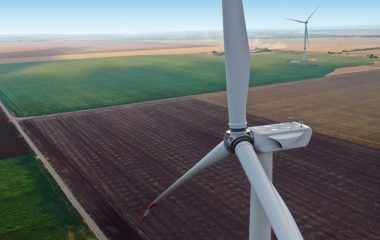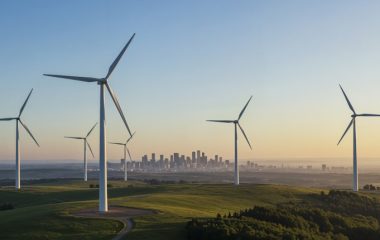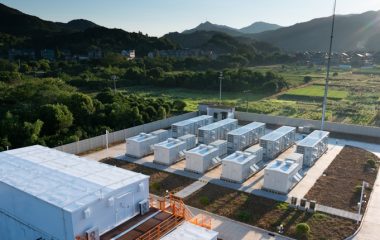
Photo: Zhong Peng from Pixabay
Share
WindEurope’s annual statistics and seven-year outlook show the European Union’s wind energy target for 2030 is within reach, mainly thanks to improvements in permitting and a rebound in investments. Germany is spearheading the sector’s development in Europe while Greece and Turkey have the strongest expansion in the Balkans.
Europe installed 18.3 GW of new wind power capacity in 2023, WindEurope said. The EU accounted for 16.2 GW, a record amount but only half of what it should be building to meet its 2030 climate and energy targets.
A total of 272 GW of wind power capacity was installed in Europe at New Year, of which 87% onshore and 13% offshore, according to the organization’s statistics and seven-year outlook. It compares to 220 GW in the EU, with a ratio of 91% to 9%. Last year 79% of new capacity in Europe was onshore.
Things are looking up again for wind in Europe, WindEurope CEO Giles Dickson reiterated.
“Permitting has improved thanks to new EU rules. Investments are up. Record volumes are being auctioned and built. And governments have committed with the Wind Power Package and Charter to strengthen Europe’s wind energy industry. The industry in turn is recovering. Europe’s wind supply chain is returning to profit and building the new factories needed to deliver the EU’s targets. We’re now confident that we can get close to the EU goal that wind is 35% of electricity by 2030, up from 19% today – provided Europe accelerates the build-out of grids to connect all the new wind farms,” he stated.
The organization expects Europe to add 260 GW by 2030, of which 200 GW in the EU or 29 GW a year on average. It means the 27-member trade bloc would fall around 30 GW short of the 425 GW in total that is needed to meet the 42.5% renewable energy target.
Almost one quarter of EU’s newly installed capacity is in Germany
Germany commissioned the most capacity last year, 3.9 GW, and is showing top scores in most other segments.
The Netherlands was second (2.4 GW) thanks to its record new offshore wind installations – 1.9 GW within the Hollandse Kust Noord wind farm (760 MW) and the remaining 1.15 GW at Hollandse Kust Zuid 1-4. The latter, at 1.5 GW, is now the largest operating offshore wind farm in the world. Sweden was third with 1.9 GW of new capacity installed.
Greece was ninth in Europe in wind power expansion in 2023 while Turkey is sixth in total capacity
As for Southeastern Europe, Greece added 543 MW, making it ninth on the European list, and Turkey landed twelfth with 397 MW. In total capacity, the order is reversed. Turkey has by far the biggest wind power capacity in the region tracked by Balkan Green Energy News, 12 GW. It earned the sixth place in Europe, compared to 5 GW and the 14th position for Greece.
At the end of 2023, Germany had 70 GW in installed wind power capacity, more than two times more than the runnerup, Spain, with 31 GW.
Offshore seen accounting for half of wind power additions in 2030
The volume of new offshore wind is growing – last year it was a record 3.8 GW in Europe. Actually, WindEurope expects new offshore and onshore installations in 2030 to be almost the same.
New investments in offshore wind alone amounted to EUR 30 billion – a stark contrast to the EUR 0.4 billion invested in 2022.
Upcoming auctions are planned to feature floating wind in the gigawatts
As for the floating wind farm segment, Norway connected the remaining 35 MW at Hywind Tampen. At 95 MW in total, it is the largest in the world. It is just a prelude to what’s to come, as many countries are lining up gigawatts in auctions for floating offshore wind power.
In 2023, 27.3 GW of new wind power capacity was awarded in auctions across 13 countries in Europe, surpassing the 16.9 GW result achieved in the previous year. Offshore wind accounts for 13.6 GW, of which 8.8 GW in Germany. Twelve countries awarded the remaining 13.7 GW in onshore capacity, again led by Germany’s 6.4 GW.
Some installations reached the end of their operating life. The report shows 736 MW of wind power was decommissioned but 1.4 GW came from repowering projects. In Germany, it was 534 MW against 1.08 GW.
Greece above EU average in wind power share in consumption
Denmark kept the top position with regard to the share of wind power in electricity consumption, with 56%, followed by Ireland’s 36%. Greece fares the best in the Balkans – 20%. It is one percentage point above the entire EU and matches the level if the United Kingdom is added to the sum.
Wind makes up 14% of the electricity mix in Croatia and Romania, sharing the second and third places in the region.
WindEurope also warned that new wind farm projects with hundreds of gigawatts are waiting for grid connection approvals. Delays in network expansion put the timely commissioning at risk. Wind power plants mostly use high voltage – transmission lines, not the distribution network.









Be the first one to comment on this article.